Spatial Manager Desktop™ - FAQs: Data use
Notes:
- Some components in the images on this page (providers, names, windows look, etc.) may be slightly different from those that will appear on your computer
- Some application functions need to access the Internet from the application itself. If you experiment problems in any process, ask your network administrator if there is a Proxy server installed on your network. You can configure the Proxy settings through the application options
- Some geographic data providers (Geocode, image Maps, etc.) may need a user account, which you can configure in the Service Provider API Keys settings through the application options
Introduction
- Objective of this section
- To exploit graphics and alphanumeric data from the application into other applications and print maps or feature selections
- Topics in this section
- Exporting data: from the data grid
- Copying to clipboard: Feature Selections or whole Map. Vector or raster copies
- Working in other applications: office applications and others
- Printing: current view, whole Map, a Map area or a Features Selection
How can I export alphanumeric data?
In Spatial Manager Desktop™ you can export alphanumeric data of the Features in the selected Layer to a CSV file (comma-separated values or character-separated values), by using the right-click menu over any place on the Data grid or by click on the button in the left bottom of the Data grid. When the export process is finished, you can use the CSV file in other applications, such as office or CAD applications
You can choose any extension in the name of the outgoing CSV file, but the application will suggest *.txt, *.csv, *.tab and *.asc, because they are the most commonly used extensions
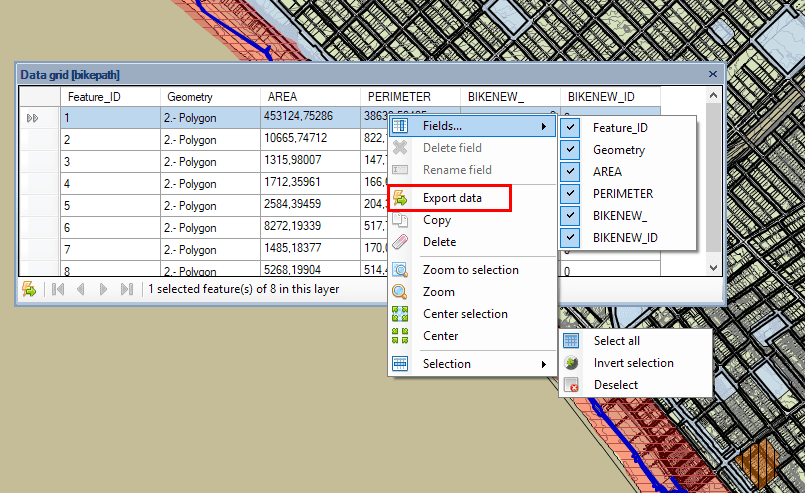
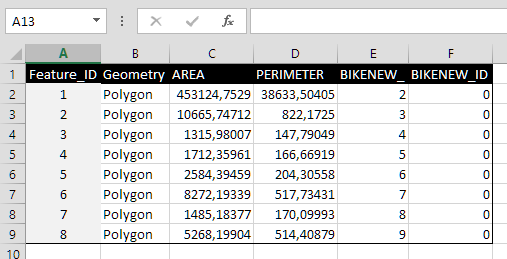
Sample: open an exported CSV file in Microsoft Excel
You can export the data for the whole Layer or only for the selected Features in the Layer, if any. You can also choose the values separator and, if you want, you can add a first row in the outgoing CSV file including the names of the data table Fields
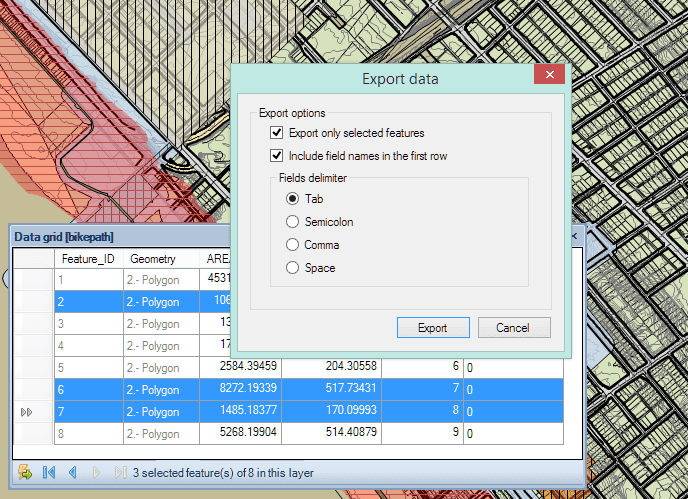
As you can choose which Fields will be displayed in the Data grid, the exported CSV file will only include the data in these Fields. And, as you can also sort the Field columns in the Data grid by dragging the name of the Field to sort, the contents into the exported CSV file will also respect the columns order in the grid
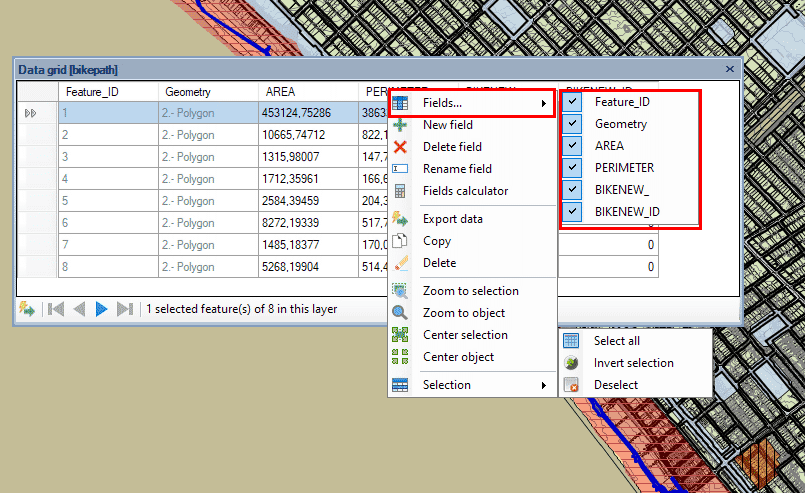
Can I copy data to the Windows Clipboard?
Yes, you can Copy data to the Windows Clipboard in Spatial Manager Desktop™ in several ways:
- Copy the current view of a Map as an image, using the "Copy Bitmap" function in the "Start" ribbon
- Copy all the Features included in the current view of a Map, if any, as vector objects, using the "Copy Vector" function in the "Start" ribbon
- Copy the selected Features in a Map, if any, as vector objects, using the "Copy" function in the "Selection\Tools" ribbon
- Copy the alphanumeric data of the selected Features in the Data grid, if any, by pressing CTRL+C. You can also copy the data using "Copy" from the Data grid right-click menu
- The selected row(s) and header(s) (field names) will be copied in a tab-separated format, suitable for pasting into a spreadsheet, ASCII editor, etc.
- As an exception, if a field is being edited, only the value of this field will be copied to the clipboard
- Copy any data in the Properties panel, by placing the cursor over this data and pressing CTRL+C
After Copying the data to the Windows Clipboard in Spatial Manager Desktop™, you can Paste it into another Windows application that supports image, vector or text data in this operation
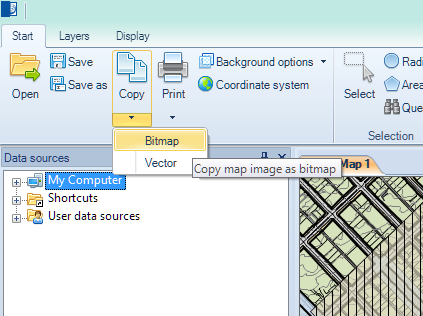
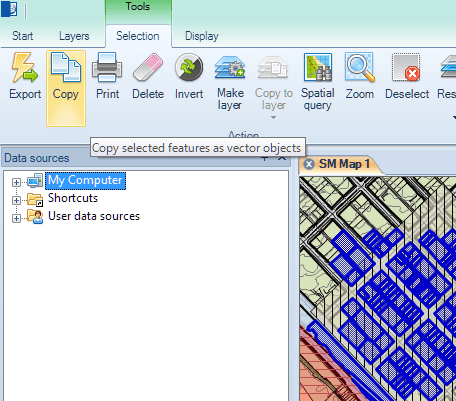

Paste samples:
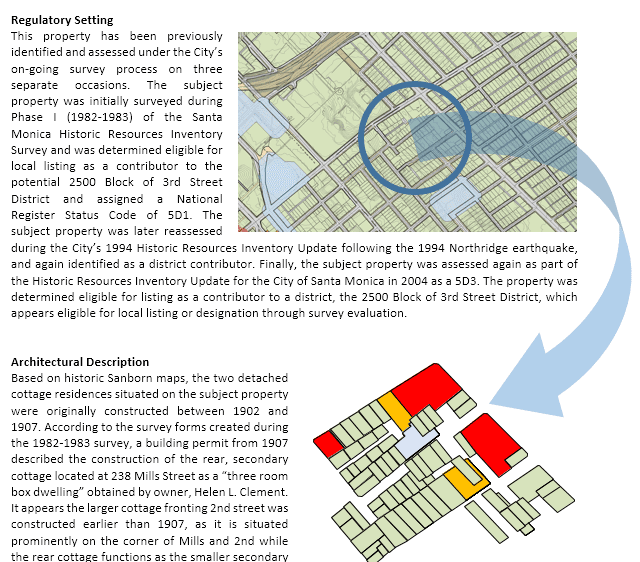
Sample 1: MS Word as vector objects. Ungroup them after Pasting and you can edit the objects in MS Word
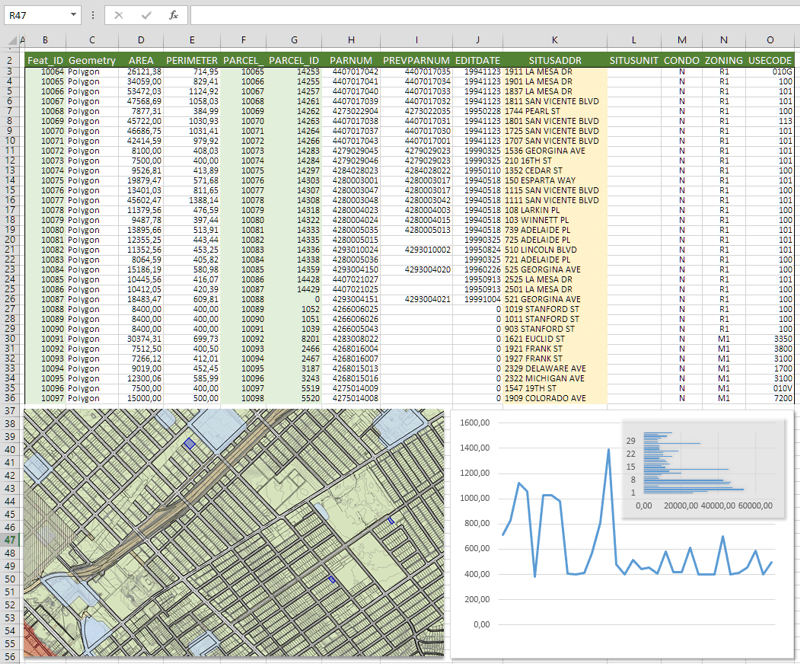
Sample 2: MS Excel as an image
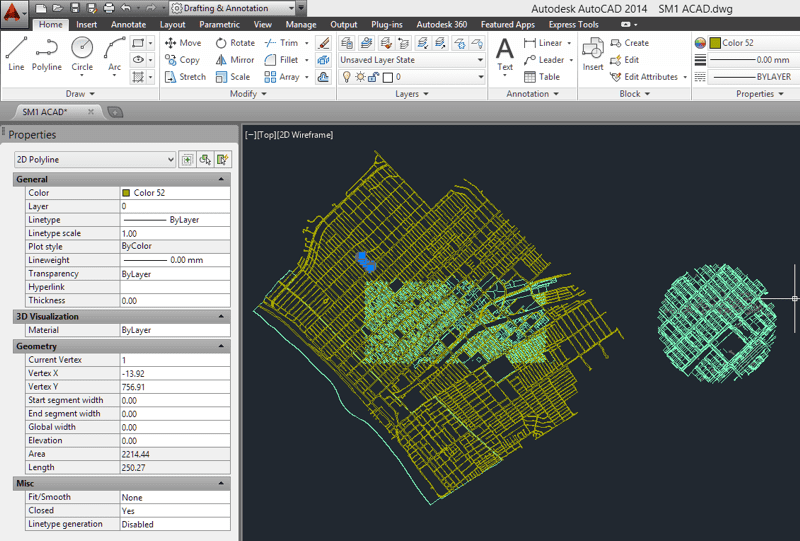
Sample 3: AutoCAD as vector objects. You will get Polylines, Points, etc., if you Paste them as AutoCAD objects
How can I Print?
You can print several views of a Map in Spatial Manager Desktop™ by using the "Print" drop-down button in the "Start" ribbon. The functions included in this button are the following:
- Print the current view of the Map
- Print the extents of the Map
- Print an area of the Map defined by a window
- Print the extents of the current selected Features of a Map (if any). You can also find this function in the "Selection\Tools" ribbon
When you run any of these functions, you will get a "Print Preview" window to check the area to be printed. Furthermore, in this window, you can adjust the basic "Page Settings" and the horizontal and vertical alignments of the printed area inside the page
Note that, if you have chosen a Base Map as background, it will also be printed, if not, the "Background color" configured for the Map will be the printed color for any empty zone inside the selected area to print
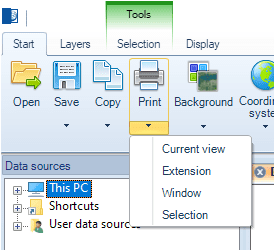
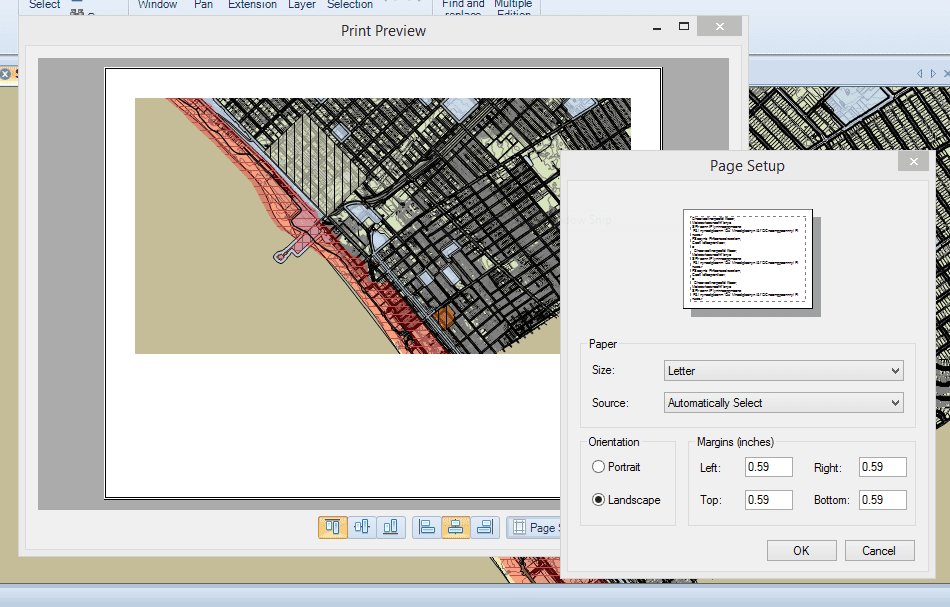
Printing the current view of a Map
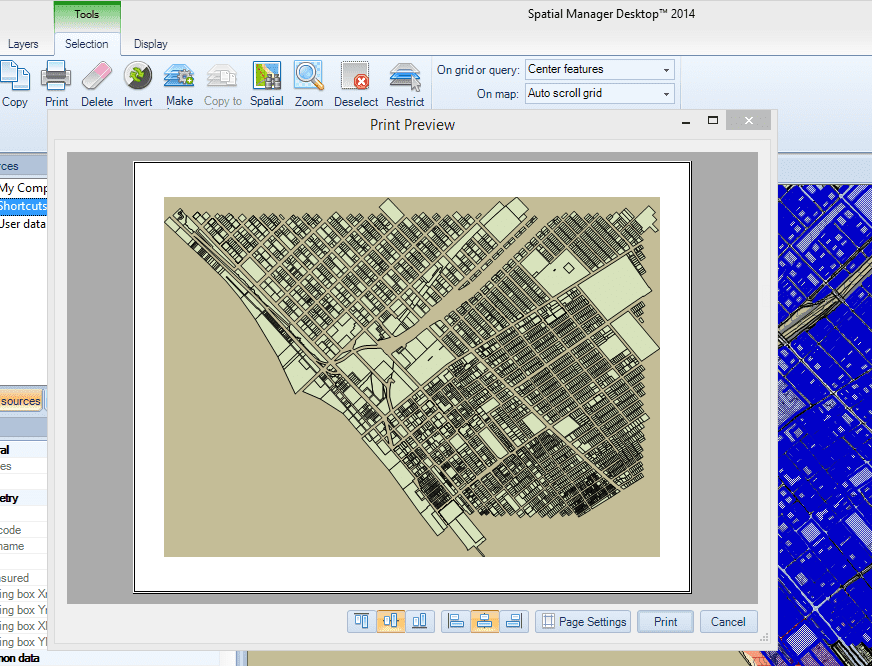
Printing a set of selected Features of a Map
Related links
- Blog posts